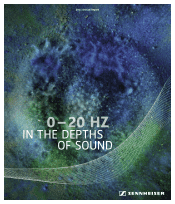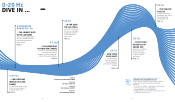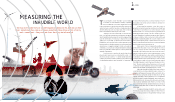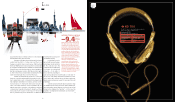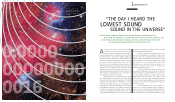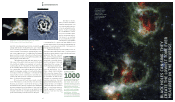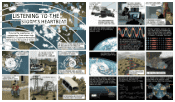Sennheiser 2011 Annual Report Download - page 7
Download and view the complete annual report
Please find page 7 of the 2011 Sennheiser annual report below. You can navigate through the pages in the report by either clicking on the pages listed below, or by using the keyword search tool below to find specific information within the annual report.
12 13
0.0000000000000016 Hz
BLACK-HOLE ACOUSTICS
“THE DAY I HEARD THE
SOUND IN THE UNIVERSE”
LOWEST SOUND
British-born Andrew Fabian is one of the foremost astronomers in
the world. His specialty? Listening to the murmurs of the universe and
observing its black holes. In doing so, he has discovered sound waves
a million times below the limits of the human ear.
As an X-ray astronomer, I’m interested in studying
processes in the universe that release tremendous
amounts of energy – energy whose electromagnetic
radiation is dispersed across the universe to be recorded on
Earth after its long cosmic journey. Though it might seem
similar to the study of stars, there is a huge difference be-
tween stars and the heavenly bodies I observe. The radia-
tion sources I study have temperatures in excess of 1,000
times that of stars. Using the law of physics, we know the
radiation they emit also has a frequency of more than 1,000
times that of stars. Whereas the electromagnetic waves
emitted from a star’s hot surface make it possible for us to
admire them against the dark expanse of the universe, the
shift in frequencies takes black holes out of the visible spec-
trum and into the range of invisible X-rays.
One possible source of such X-ray radiation is giant
gas clouds, which become extremely hot as they are drawn
into black holes. Black holes are the remnants of stars that,
after having consumed all their combustible fuel, collapse
under their own weight, as it were, into an extremely con-
centrated mass. If the same thing happened to the Earth,
we would have to squeeze it into a ball with a diameter of
less than two centimeters! Such an extremely concentrated
object has an incredibly powerful gravitational pull, suck-
ing in anything that wanders by – never to be seen again.
The so-called Perseus
Cluster is around 250 mil-
lion light-years away from
Earth and comprises 1,000
galaxies.
Such is the case with electromagnetic radiation and light.
Nothing is emitted from a black hole.
As a gas cloud approaches a black hole, its gas par-
ticles reach a very high velocity and begin to collide violent-
ly against each other, creating temperatures in the tens of
millions, which are then emitted as X-ray radiation. These
X-rays, however, are absorbed by the upper layers of the
atmosphere and so never reach the Earth’s surface. What
that means for astronomers is that we are only able to ob-
serve X-ray sources from outer space – for instance, with
the help of satellite telescopes.
The most powerful X-ray telescope right now is
Chandra, which was deployed by a NASA space shuttle in
1999. The Chandra is equipped with the most accurate mir-
rors ever polished, at the time costing some 400 million
dollars. By directing X-ray radiation onto a detector, much
like the sensors of a video camera, the Chandra has helped
us learn some truly amazing things about the universe in
recent years. One of them is that black holes emit an ex-
tremely low murmur.
The most powerful source of X-ray radiation ob-
served so far is a cluster of galaxies in the constellation of
Perseus. Some 250 million light years away from Earth, Per-
seus is made up of thousands of galaxies immersed in a hot
gas cloud. At the center of the Perseus Cluster is a black
0.0000
00000000
0016

